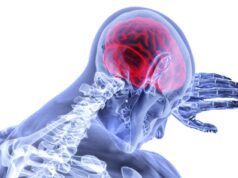
“The single biggest challenge going forward is the organisation of stroke care,” says Mayank Goyal (University of Calgary, Canada). He dissected the arguments at the Live Interventional Neuroradiology & Neurosurgery Course (LINNC; 11–13 June, Paris, France).
Revisiting the denominator fallacy Goyal explained that if 100 people come to the hospital within 30 minutes of stroke onset, 90% of them will have favourable imaging and 60% of them will have good outcomes. Compare this to 100 patients that come to the hospital six hours after stroke onset, where only 10 of them have favourable imaging and six go on to have good outcomes. This shows that just by reducing the time between stroke and hospital admission there is the potentially to have a 400% effect size.
“That is the single biggest problem we face right now: getting these patients to come to us earlier,” Goyal says. “Going to the wrong hospital is like going to a black hole and coming out, on average you loose two hours just by going to the wrong hospital.”
How do we create a system here the patient goes to the correct hospital first time?
Goyal, who is an advocate of big data, has been working on an updated model that inputs data such as the time it takes to get to primary care centre or comprehensive care centre. From this model, he and his research group found that unless a patient with significant stroke symptoms lives in the middle-of nowhere, it is always best to go straight to the comprehensive stroke centre, not just a facility offering alteplase.
The models show that only if the primary care centres are able to administer alteplase within 30 minutes of hospital arrival is it better to go there instead of to a comprehensive care centre. When the door-to-needle time at the primary care centre is longer, the “Drip ‘n Ship” option is likely to be beneficial only for those primary care centres that are further away from the comprehensive care centres. The predicted probability of good outcomes declines as the distance to the comprehensive care centres increases. The other beauty of the model is that it can adapt to changing circumstances and can be updated based on data e.g. it is quite possible that the efficacy of endovascular thrombectomy improves with improvements in technique, training and technology resulting in improved outcomes; these improved outcomes can immediately be plugged into the model. They are hoping to make the model ‘live’ where the model can adapt to local conditions such as traffic and weather.
This shows the need of centralised planning regarding the placement of comprehensive stroke centres. By doing this, the time from stroke onset to optimal treatment can be greatly reduced, moving more patients into the optimal outcome group.
Highlighting this issue, Goyal explained, “Nobel Laureate Amartya Sen and his work on famines showed that famine is not about lack of food but about the distribution of food. This can be compared to stroke care: at a basic level it is dependent on the distribution of neurointerventionalists skill sets as opposed to the total number of fellows that are trained.” He continued, “There is a risk that as we train fellows there will be more and more neurointerventionalists in the big cities, such as New York and Chicago, but that they still do not provide service to the areas that need it. We need to think a plan for services so there is a reasonable distribution of interventionalists.”













